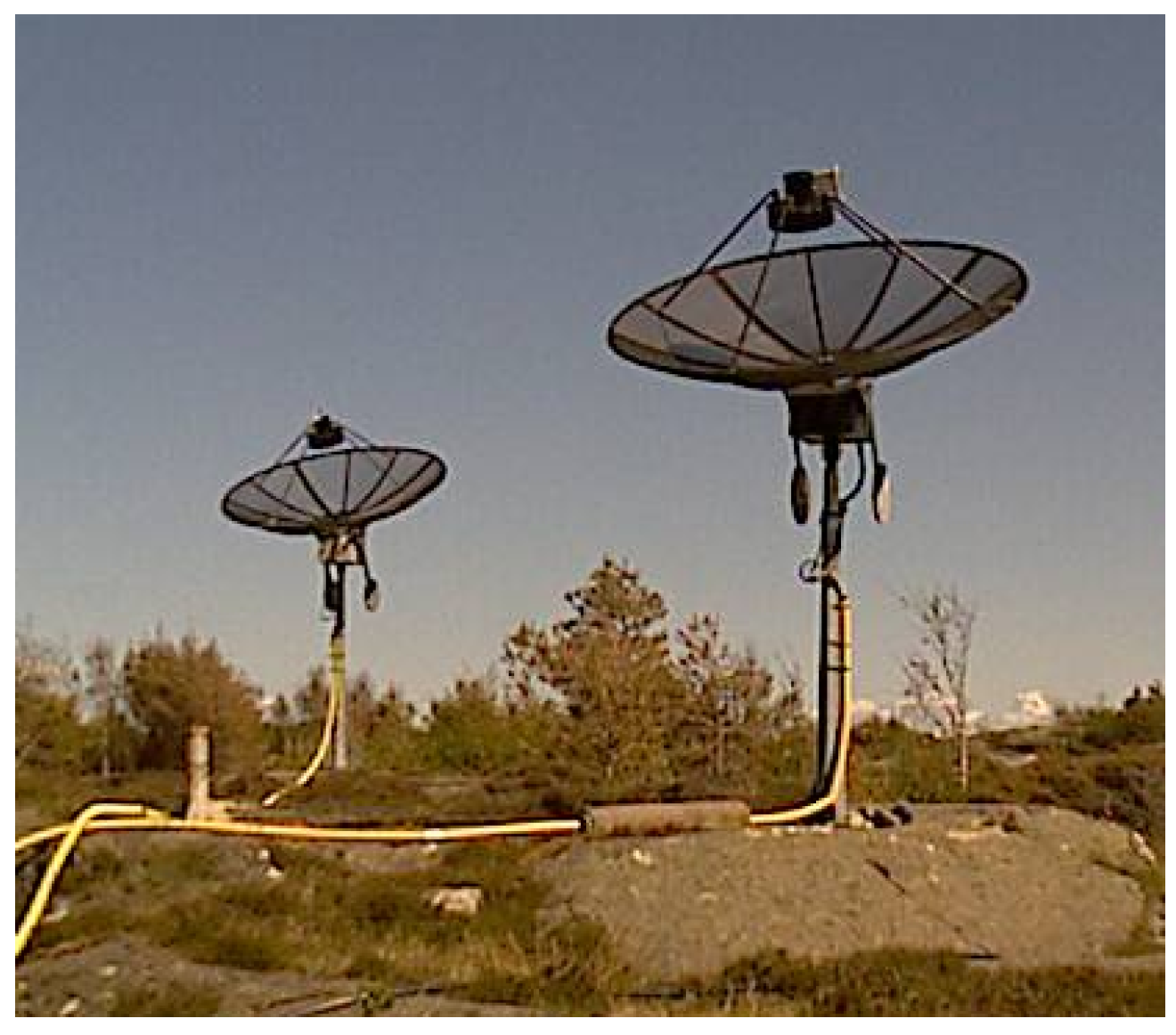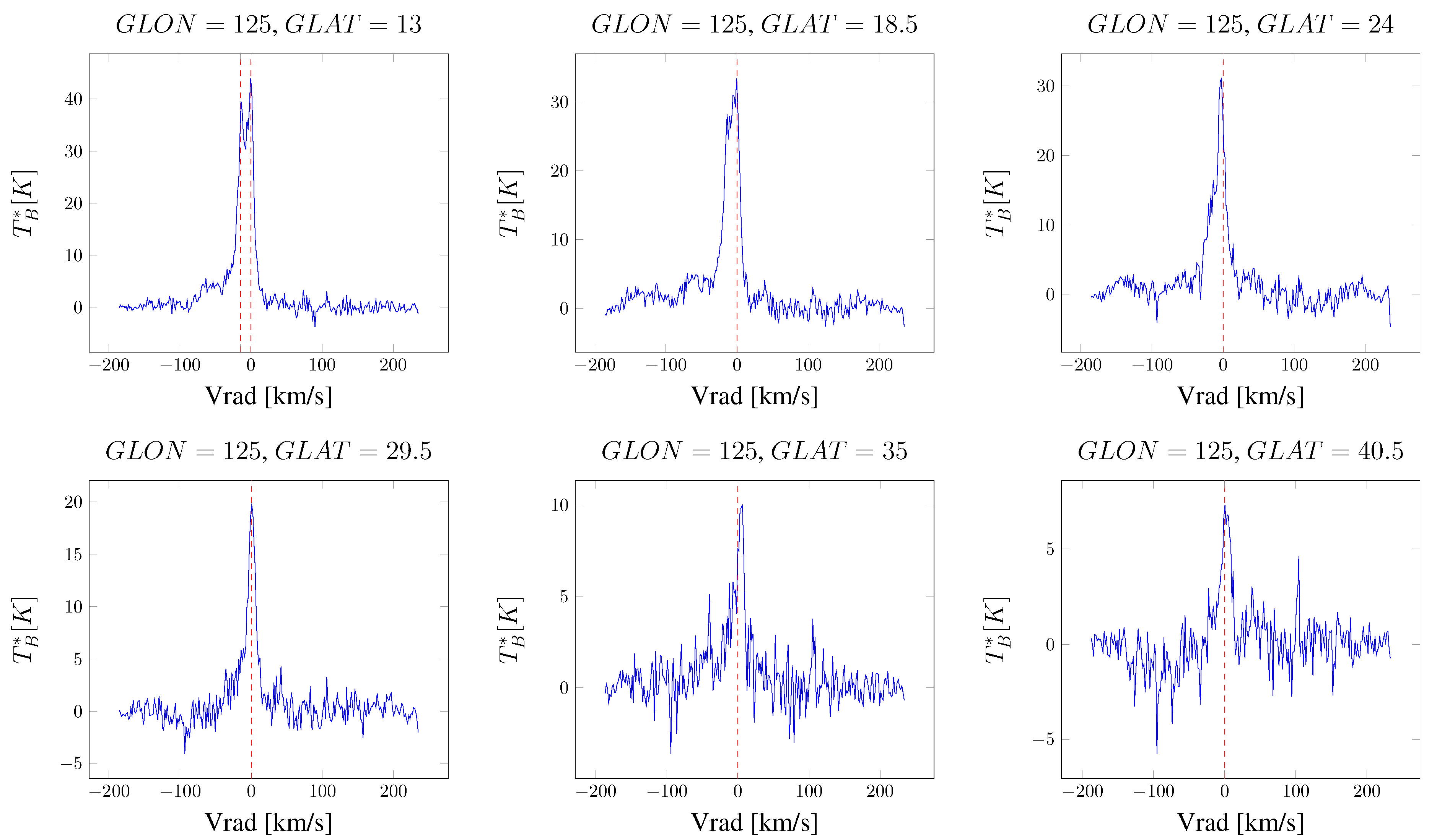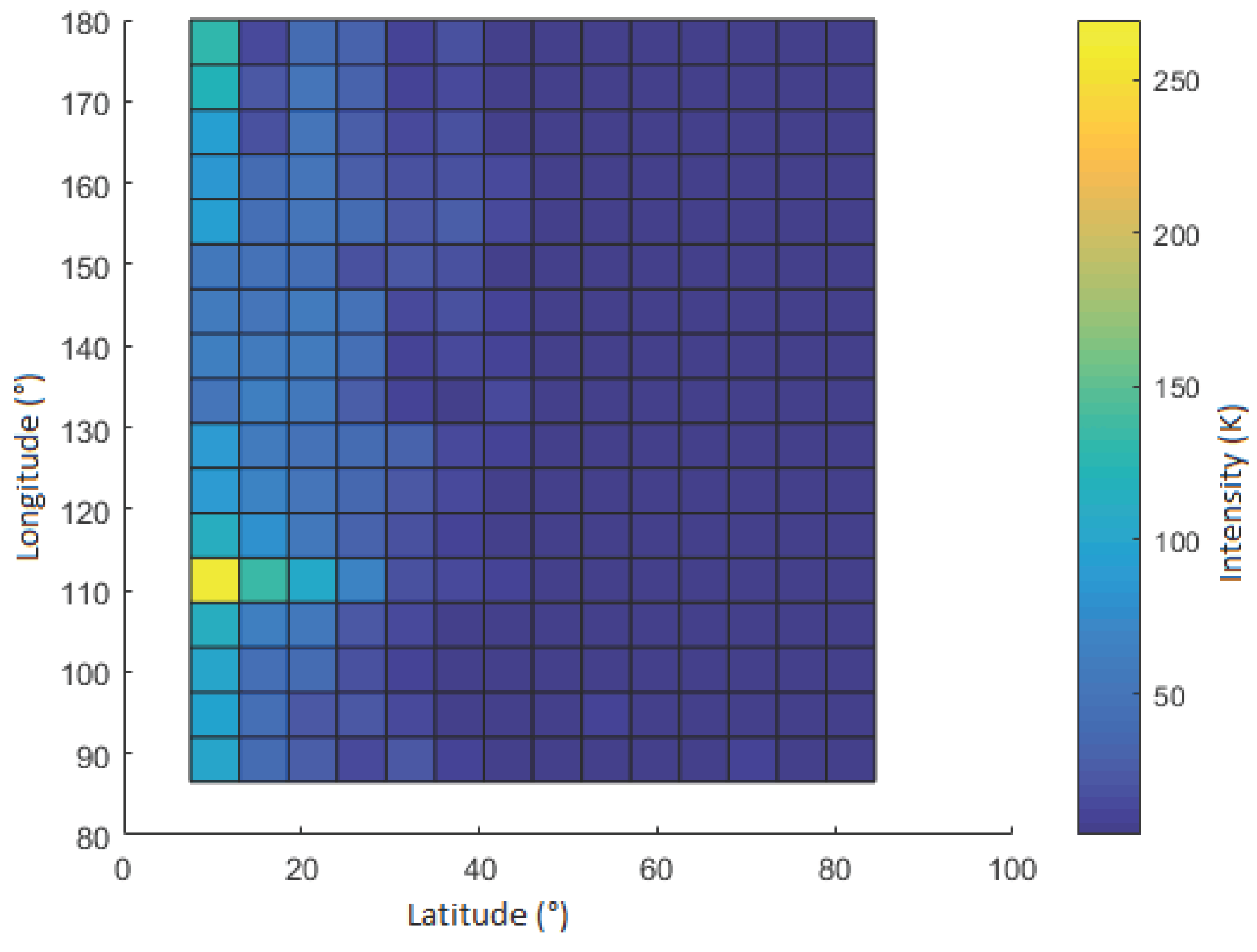The HI Distribution Observed toward a Halo Region of the Milky Way
Abstract
:1. Introduction
2. Observations and Data Reduction
3. Results
4. Conclusions and Future Work
Author Contributions
Conflicts of Interest
References
- Kalverla, P.M.W.; Jürgen, K. The HI Distribution of the Milky Way. Annu. Rev. Astron. Astrophys. 2009, 47, 27–61. [Google Scholar] [CrossRef]
- Dickey, J.M.; Lockman, F.J. HI in the Galaxy. Annu. Rev. Astron. Astrophys. 1990, 28, 215–259. [Google Scholar] [CrossRef]
- Ben Bekhti, N.; Flöer, L.; Keller, R.; Kerp, J.; Lenz, D.; Winkel, B.; Bailin, J.; Calabretta, M.R.; Dedes, L.; Ford, H.A.; et al. HI4PI: A full-sky HI survey based on EBHIS and GASS. Astron. Astrophys. 2016, 594, A116. [Google Scholar]
- SALSA User Manual: Telescope Control and Data Analysis. Available online: http://vale.oso.chalmers.se/salsa/support (accessed on 17 June 2017).
- Higgs, L.A.; Tapping, K.F. The low-resolution DRAO survey of HI emission from the Galactic plane. Astron. J. 2000, 120, 2471–2487. [Google Scholar] [CrossRef]
- Ford, H.A.; Lockman, F.J.; McClure-Griffiths, N.M. Milky Way disk-halo transition in HI: Properties of the cloud population. Astrophys. J. 2010, 722, 367–379. [Google Scholar] [CrossRef]
| 1. | |
| 2. |



| l Degrees | b Degrees | (K km s) | N (×10 cm) |
|---|---|---|---|
| 125 | 13.0 | 623.5 | 11.4 |
| 125 | 18.5 | 514.7 | 9.4 |
| 125 | 24.0 | 391.7 | 7.1 |
| 125 | 29.5 | 193.4 | 3.5 |
© 2017 by the authors. Licensee MDPI, Basel, Switzerland. This article is an open access article distributed under the terms and conditions of the Creative Commons Attribution (CC BY) license (http://creativecommons.org/licenses/by/4.0/).
Share and Cite
López, E.; Armijos, J.; Llerena, M.; Aldás, F. The HI Distribution Observed toward a Halo Region of the Milky Way. Galaxies 2017, 5, 45. https://doi.org/10.3390/galaxies5030045
López E, Armijos J, Llerena M, Aldás F. The HI Distribution Observed toward a Halo Region of the Milky Way. Galaxies. 2017; 5(3):45. https://doi.org/10.3390/galaxies5030045
Chicago/Turabian StyleLópez, Ericson, Jairo Armijos, Mario Llerena, and Franklin Aldás. 2017. "The HI Distribution Observed toward a Halo Region of the Milky Way" Galaxies 5, no. 3: 45. https://doi.org/10.3390/galaxies5030045






